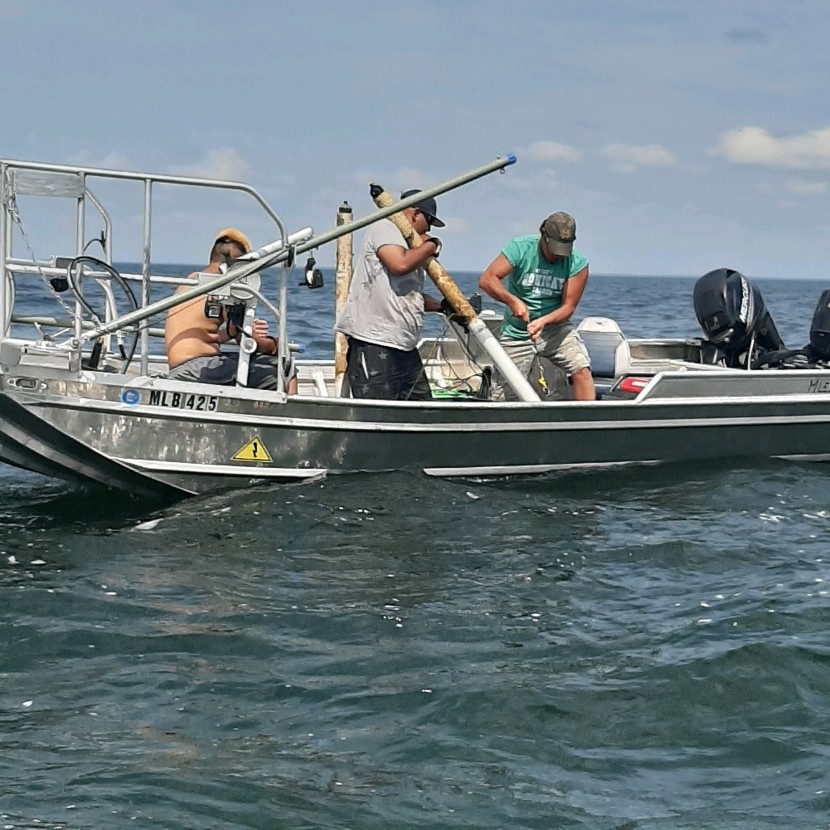
In 2020, staff from Mille Lacs Band Department of Natural Resources and GLIFWC began the process of collecting and analyzing data as a part of the Band’s ongoing acoustic telemetry study of fish movements, habitat, and temperature preferences in Mille Lacs Lake.
For two weeks in late June, staff worked to retrieve 61 receivers which had been submerged in the lake since spring of 2019 logging fish detection data. After collection, the fish detection data was downloaded, and the receivers were redeployed in the same locations to continue collecting data.
The fish detection data from 2019–2020 includes depth, temperature, and location information from tagged northern pike, walleye, tullibee, and yellow perch. In addition, data from over 90 light and temperature loggers was also collected to determine how water temperature varies by depth for each season. In addition, 11 receivers were also deployed in rivers and streams connected to Mille Lacs Lake. Those receivers detected fish movement as far away as Milaca (30 miles south, Rum River).
The telemetry study will help tribal biologists understand whether factors like increased water temperature and clarity are reducing the amount of available habitat for walleye, leading to potentially greater predation of juvenile walleye by adult walleye. The other fish species will inform tribal biologists on how forage fish impact juvenile walleye cannibalism and movement.
"Analyzing the data is the exciting part of this study," said Carl Klimah, fisheries manager for the Mille Lacs Band Department of Natural Resources. "All of the hard work is now paying off and we are starting to build an important understanding of fish movement in the lake that could help us understand what factors are impacting walleye abundance and health."
Mille Lacs Band and GLIFWC staff are in the process of analyzing the 2018–2019 fish detection data. Preliminary results were drafted into a presentation which was presented by Klimah at the 2020 American Fisheries Society Virtual Conference.
Initial data indicates that adult and juvenile walleye are typically not at the same depth in the lake, with juveniles preferring much deeper water. This would suggest that, while there are periods of overlap that provide limited windows for cannibalism, these windows may be short and occur during specific times of the year. For instance, tribal biologists found that during the daytime in January there was geographic, temperature, and depth overlap between adults and juveniles. It is important to note that this is based off one year of data, and it is unknown if there is year-to-year variability to fish movement and behavior.
While the 2018–2019 fish detection data focuses only on adult and juvenile walleye, the newly downloaded results from June 2020 also include northern pike, tullibee and yellow perch. Klimah said the team hopes to have all data from 2018–2020 analyzed and compiled into shareable reports and presentations by spring 2021. However, advanced analysis of the data will most likely be ongoing and continue past 2021.
"Next year, we hope to tag smallmouth bass and/or muskellunge as a part of our fish tracking study to continue to deepen our understanding of the complex biology of Mille Lacs Lake," Klimah said.